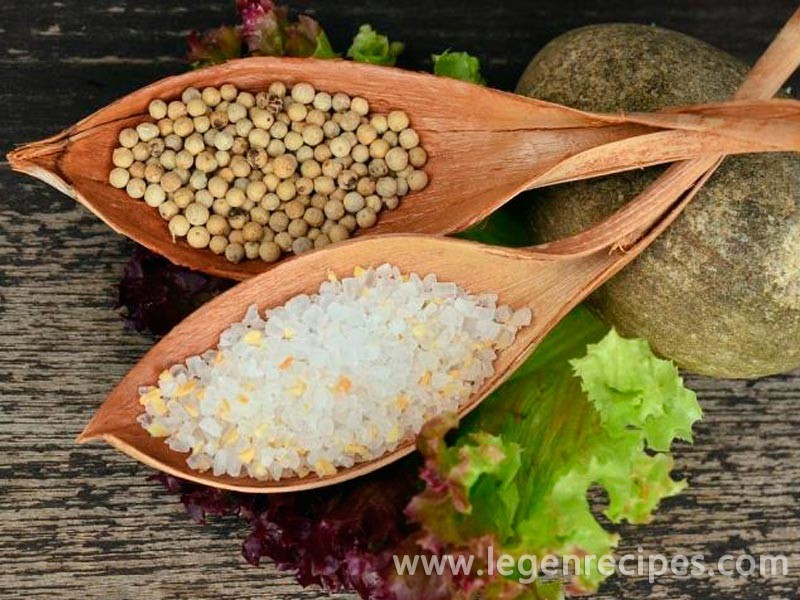Salt and sugar. Should I give my child?
Salt and sugar – mixed products not only in the feed system adults and in children’s diets. And in general, whether or not to give the baby salt and sugar, or better to do without them?
Salt
Properties salt
Useful:
- It does not cause allergies (as a part of all the body’s cells).
- It helps to maintain the water balance in the body, prevents dehydration.
- It improves the taste of food.
Harmful:
- Delays in the body fluid.
- It increases the load on the kidneys.
When administered salt in the diet of a child?
We tend to think that salt – an important component of any diet, so if it is not in the child’s diet, parents begin to worry.
However, we must note that in the diet of infants and children up to the first year of life, the daily rate is 0.3 grams of salt (after one year – 0.5 g), which it receives from the mother’s milk or infant formula. If in addition you want to enrich the diet with salt kid, his kidneys and pancreas simply can not cope with such a huge load.
It is also one of the reasons for the dispute relating to salt in the baby food is the fear of parents that they deprive the favorite child, depriving him of the usual for us to taste sensation when using this product. In fact, there is no problem: the receptors that receive salt, a child from birth is not developed, so he does not know whether his salty foods or not, and, accordingly, does not feel the lack. But when you will meet a child with the taste of salt, these buds will develop and require salt in food in different amounts. In this regard, most pediatricians strongly recommend to abandon the salt, until the child is at least a year.
Then parents should adhere to the following dosage: not more than 0.25-0.35 g salt (actually pinch) per day can then be increased to 0.5-1 g (up to 3 years) and to gradually increase the dose in an adult 4-5 grams of salt per day.
What salt is necessary to give the baby?
Buy ordinary table salt. If you live in central Russia, which is considered the region of iodine deficiency, buy iodized salt (keep in mind, its shelf life of only 3-4 months).
Also there giponatrievaya salt, wherein the content of sodium as compared to chloride, is significantly lower. As a rule, it is prescribed for hypertension, obesity and kidney disease. To determine the type of salt, which is really necessary for your child, consult your doctor.
Attention! Sea salt in the diet of children under one year is not used.
Useful tips for parents
- Salt foods “by eye” is not desirable – it can lead to excessive consumption of common salt. For example, 1 hour. L. It contains 10 g of salt (which is 2 times higher adult RDA).
- Try to minimize the use of a child following products containing salt: ketchup, mayonnaise, canned salty foods, salted fish, sausages and so on. N.
- Be careful with the salt-free diet fashion: it is prescribed only for therapeutic purposes and is carried out under the strict supervision of a pediatrician.
Sugar
The properties of sugar
Useful:
- It is easily digestible source of energy.
- It accelerates many vital processes in the body.
- It promotes brain activity.
- It is an excellent preservative, stopping the development of many harmful bacteria.
Harmful:
- Increases putrefaction and fermentation in the gut (which causes swelling), whereby products of incomplete digestion of the protein absorbed in the blood and cause allergies.
- It is one of the main causes of obesity, diabetes and changes in the central nervous system.
- When excessive use leads to the destruction of tooth enamel.
- It causes errors in nutrition: sweetened food gives the illusion of saturation, from which the child begins to eat less.
- Is addictive from the resulting glucose child is experiencing emotional lift, but when the blood sugar level drops, reaching the standards, the kid does not begin to get a sense of joy, he begins to ask, and then require sugary foods.
When administered sugar in the diet of the child?
A child under 1 year of demand for sugar only 4 grams per day (slightly less than 1 tsp), respectively, if the baby is not allergic, you can add sugar in the specified amount of acid in fruit drinks. However, many pediatricians say that until the year the child can not familiar with the taste of sugar.
The child is from 1.5 to 3 years should be more than 6 grams of sugar per day, and from 3 to 6 years old – 7 g
The rules of the sweets in the diet of a child:
- From 1 – sweet pastries and jam.
- 1.5 years – candy, marshmallows, jellies.
- With 2-3 years – caramel, toffee.
- With 3 years – ice cream (cream or milk).
- With 3-4 years – chocolate (20 grams or one candy a day) and cakes (with whipped cream or fruit filling).
- With 3-5 years – honey.
- With 5 years – chocolates with fillings.
Useful tips for parents
You can not sweeten the lure: it can lead to the formation of harmful eating habits. Pediatricians recommend starting with the first solid foods of vegetable puree rather than a sweet fruit.
The infant formula recommended by doctors not add table sugar (sucrose), and natural fruit sugar (fructose).
Natural sources of glucose and fructose – fruit and vegetables.
Do not give candy to children for breakfast the morning they just sweet cocoa or tea. Dessert indulge kid during lunch, but the monitor portion of sweet.
Under the ban following harmful sugary foods: sodas, chewing gum, items near the cash register supermarkets, tile-sweet chocolate substitute.




